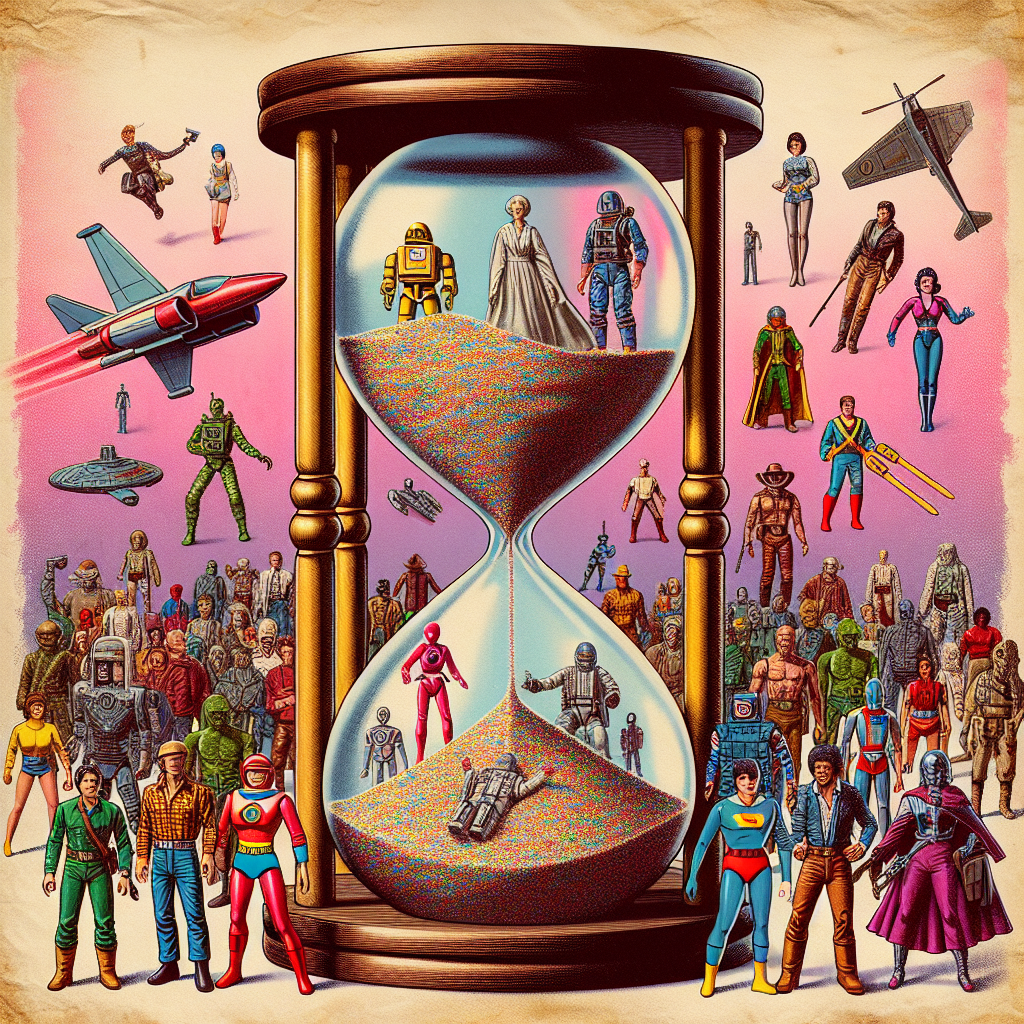The Fascinating History of Action Figures
Action figures have become a staple of childhood imagination, inspiring countless adventures and providing hours of entertainment. But how did these iconic toys come to be? In this blog post, we’ll explore the history of action figures, tracing their evolution from humble beginnings to the complex, collectible figures we know today.
Origins: The Birth of Action Figures
The concept of action figures can be traced back to the 1960s, with the advent of toy lines that began to cater to a growing market of children who desired figures that were more than just dolls. Prior to this, most figurines were either for girls or non-articulated models that didn’t allow for much imaginative play.
- G.I. Joe: Launched by Hasbro in 1964, G.I. Joe was groundbreaking as it introduced the term “action figure.” Standing at 12 inches tall, these figures were designed for boys and featured multiple points of articulation, allowing for various poses and battle scenes.
- Major Matt Mason: Produced by Mattel in 1966, Major Matt Mason was a space-themed action figure. Although it didn’t achieve the same fame as G.I. Joe, it contributed to the expansion of the action figure market.
Growth in Popularity: The 1970s
As the 1970s rolled around, the popularity of action figures skyrocketed, especially with the advent of television and cinema tie-ins. Iconic characters from cartoons and movies transitioned from the screen to toy shelves, leading to an explosion in the market.
- Star Wars Action Figures: Released by Kenner in 1977, these action figures changed the landscape forever. The Star Wars franchise generated a massive fanbase, and the figures became must-have collectibles.
- Superhero Action Figures: During the same period, companies like Mego took advantage of the popularity of comic book superheroes. Figures of characters like Spider-Man and Batman became household names, providing boys and girls alike with heroic figures to play with.
The 1980s: Innovation and Diversification
In the 1980s, action figures underwent further innovation due to advances in technology and a more diverse array of media platforms. Toy companies began to invest more in character-driven narratives and quality design.
- Transformers: Released by Hasbro in 1984, Transformers action figures not only stood as toys but also transformed into vehicles and other items. This innovative design captivated children and combined the excitement of play with a compelling story.
- Teenage Mutant Ninja Turtles: In 1988, Playmates introduced the Teenage Mutant Ninja Turtles action figures. Born from a comic book, the Turtles became a cultural phenomenon, showing that action figures could cross media boundaries.
The 1990s and Early 2000s: Collectors and Specialty Markets
The 1990s saw action figures evolve into serious collectibles, with many adult fans joining in on the fun.
- McFarlane Toys: Founded by comic artist Todd McFarlane in 1994, McFarlane Toys created hyper-detailed action figures that catered to an adult collector market. Figures around movie franchises and comic book heroes had higher articulation and realistic designs.
- Barbie Action Figures: In the 1990s, Mattel also reinvented Barbie by introducing a series of dynamic, action-oriented figures, thereby expanding the notion of action figures for girls.
Today: The Rise of Premium Collectibles
As we entered the 21st century, the action figure market expanded into niche and premium collectibles, particularly driven by dedicated fanbases and online communities. Companies began to produce highly detailed figures that often featured intricate designs and even face-scanning technology.
- Hot Toys: Known for creating detailed 1/6 scale figures, Hot Toys has invoked a sense of realism that appeals to collectors. Their figures often come with multiple accessories and head sculpts, allowing for display options that were previously unimaginable.
- Funko Pop: While not traditional action figures, Funko’s Pop! Vinyl figures have created a new genre entirely, focusing on cuteness and collectible culture. Their stylized figures represent various franchises and have found popularity among a wide demographic.
The Future of Action Figures
The history of action figures teaches us that they are much more than simple toys; they reflect cultural trends and technological advancements. As we move forward, it’s likely that action figures will continue to evolve in both design and purpose.
With the rise of virtual and augmented reality, future action figures might not just be physical toys but also interactive digital avatars. Moreover, the inclusion of diverse characters fosters representation, ensuring that children can find figures that resonate with their identity.
Conclusion
The journey of the action figure has been one of creativity, innovation, and cultural significance. From G.I. Joe to the latest premium collectibles, the world of action figures continues to grow and diversify, capturing the imaginations of children and adults alike. Understanding the history of action figures helps us appreciate these iconic toys as more than just plastic figures but rather as pieces of art, storytelling, and community.
Whether you’re a casual fan or a serious collector, the past, present, and future of action figures are surely an exciting adventure ready to inspire the next generation. Keep collecting and let your imagination go wild!


